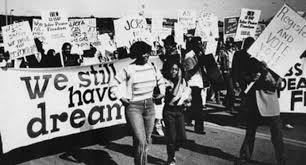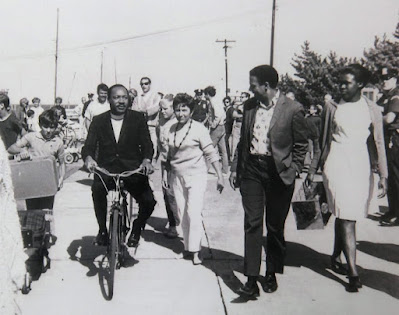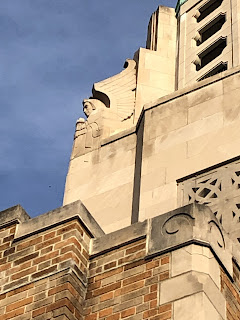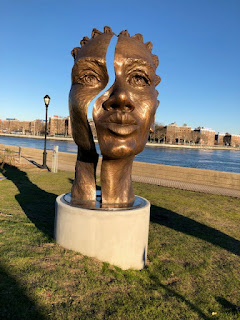Early yesterday morning I rode Tosca, my Mercian fixed-gear bike, along the waterfronts of Astoria, Long Island City, Greenpoint and Williamsburg. Another heat wave, like the one we had last week, was on its way. But that was just one reason why I took an early ride.
After showering and a cup of coffee, I pedaled my "beater" to Court Square, near the much-missed (by me, anyway) Five Pointz building. Riding there allowed me to take a more direct subway ride to Montrose Avenue in Brooklyn.
There, I met two old (OK, longtime) friends:
On previous trips to France, I've spent time with Jay and Isabelle who, I now realize, are my longest-standing friends. They came to town because their son has just begun to live and work in New Jersey, for an American branch of a company for whom he'd been working in France.
Meeting in Bushwick was Jay's idea. This wasn't his or Isabelle's first time in New York--Jay actually lived here for a time--but he was looking through the Guide Routard (a sort of French counterpart of the Lonely Planet guide) for something "different." So, as per the guide's suggestion, we started at the Montrose Street subway station, crossed Bushwick Avenue (the bane of Brooklyn cyclists) and wended our way through the back streets of a Bushwick industrial zone.


I have cycled through those streets, sometimes as a destination, other times en route to or from other places. While I've seen buildings torn down and built up, spaces opened and closed, people and organizations coming and going, I don't think there's any neighborhood or district that shows me how much this city changes over time. For one thing, some of the murals themselves change. Also, I remember when the graffiti on the buildings wasn't of the kind that people like Jay and Isabelle would take a subway ride, or people like me would take a bike ride, to see. About twenty years ago, people--mostly men--worked in the warehouses and workshops during the day. Anyone who stayed after business hours was too poor to live anyplace else. Young people didn't move to the neighborhood; they looked for ways out of it. And whenever I rode through it, I was the only adult cyclist for blocks, or even miles, around.

Of course, people change, too. After a morning of wandering through one of the most expansive displays of truly public art in this city, we went to Christina's (Was our choice influenced by the mural? ;-)) in Greenpoint. It's a sort of cross between a New York/New Jersey diner--complete with Frank Sinatra and '70's pop tunes playing in the background--and a working-class eatery one might find in Cracow. I think we were the only non-Polish people in the place. Over pierogis and blintzes, we talked about their son, Jules, and how he wants to "voyager a travers le monde"--see the world--just as we did when we were young. Actually, there are still places I want to see, and to re-visit. But the pandemic has postponed travel plans for the past two years. And, although I am fully vaccinated and take precautions, Jay reminded me of why I want to wait. He and Isabelle didn't plan on coming here until a week or so before they arrived, which meant that their flights were expensive. But, more to the point, he said that if, by some chance, he or Isabelle were to test positive and had to quarantine, or new restrictions were imposed--or a flight were abruptly cancelled--it could cost thousands of euros or dollars.

I told them that, if everything works out, I hope to return to France in January. Seeing them gave me hope for that. If nothing else, I felt as if I'd reconnected with what and whom I have known and loved, in all of changes and the ways they haven't changed.
After I send this post, I will take another early ride and get home in time for brunch.



















.jpg)




























